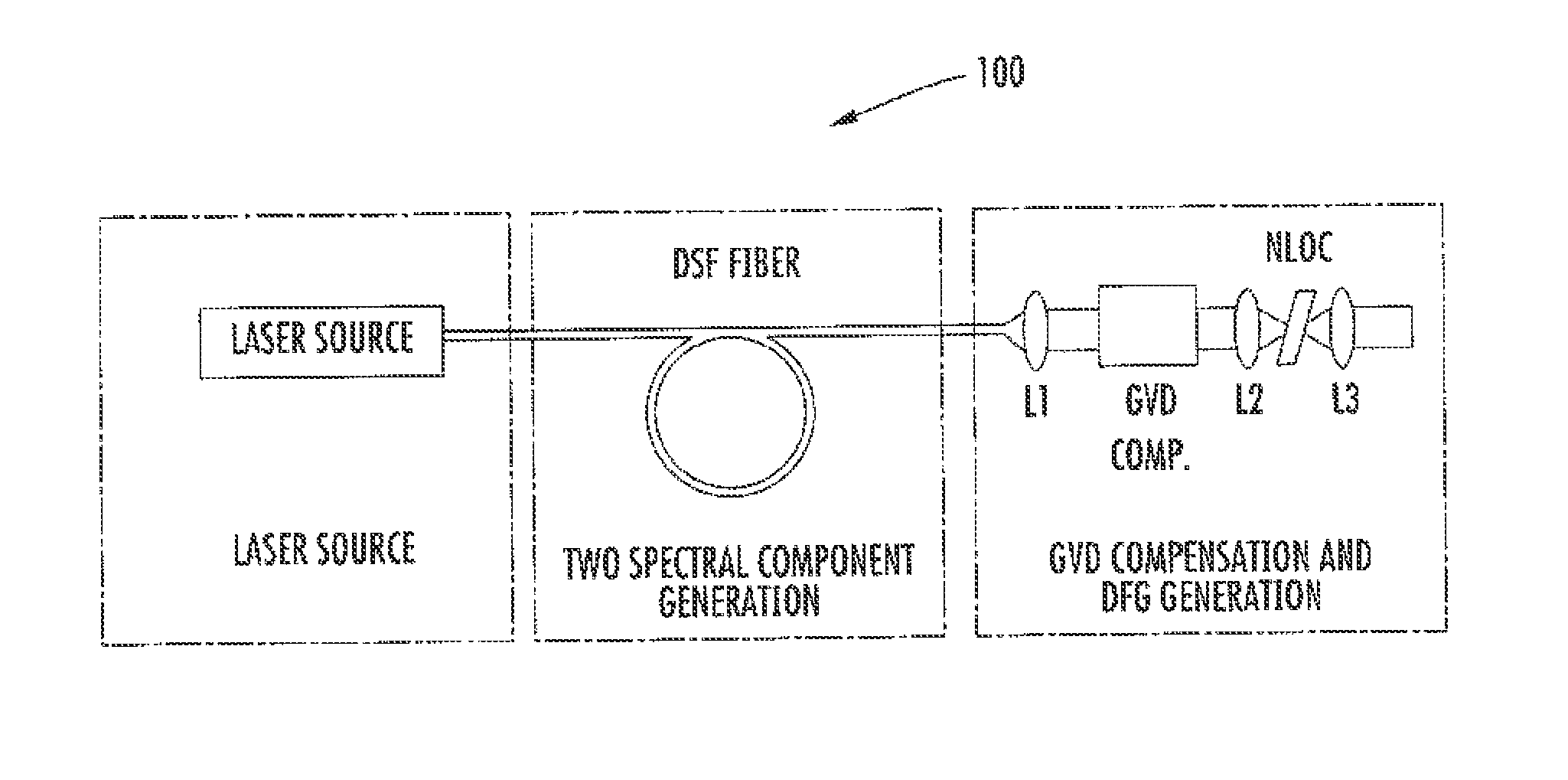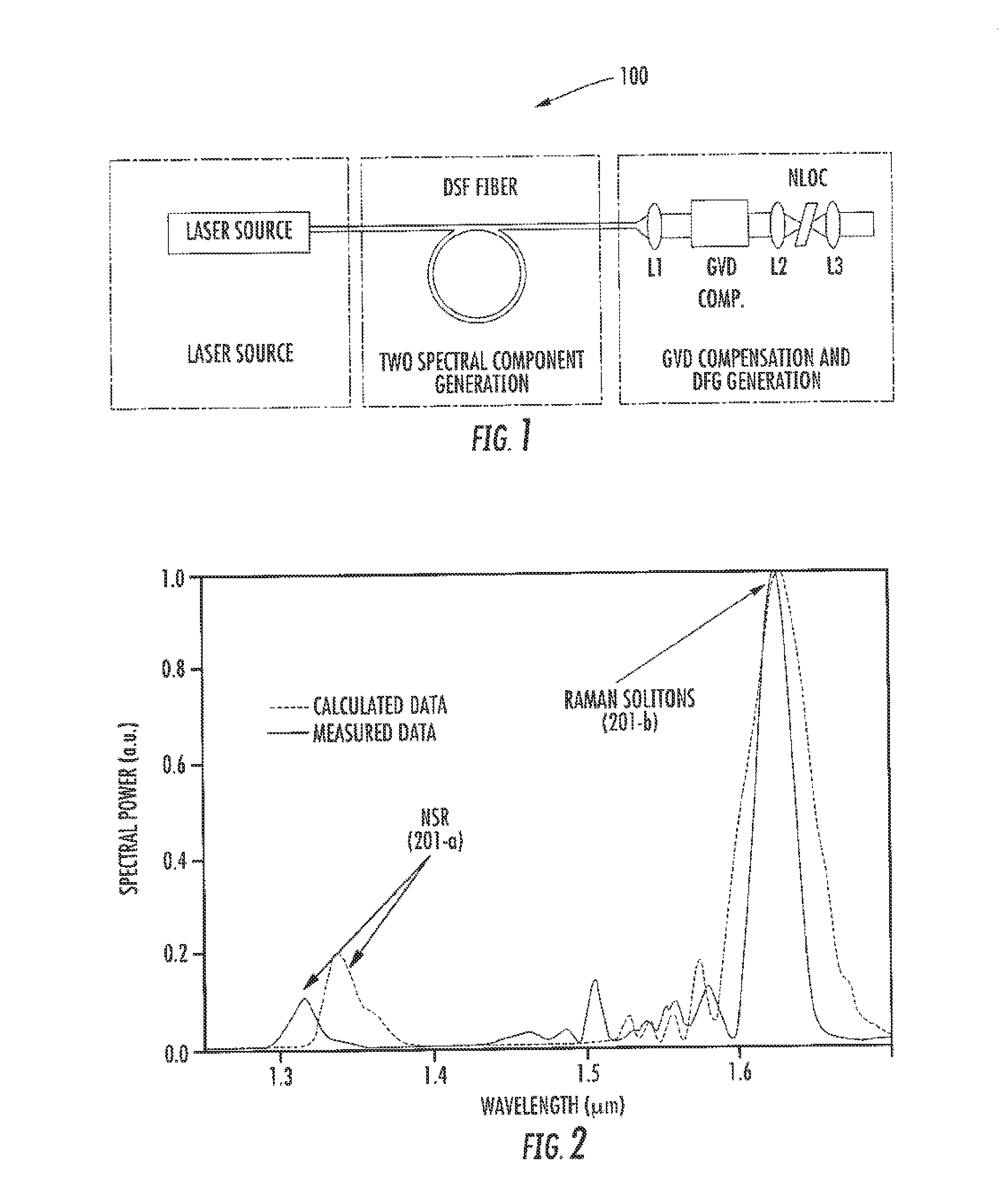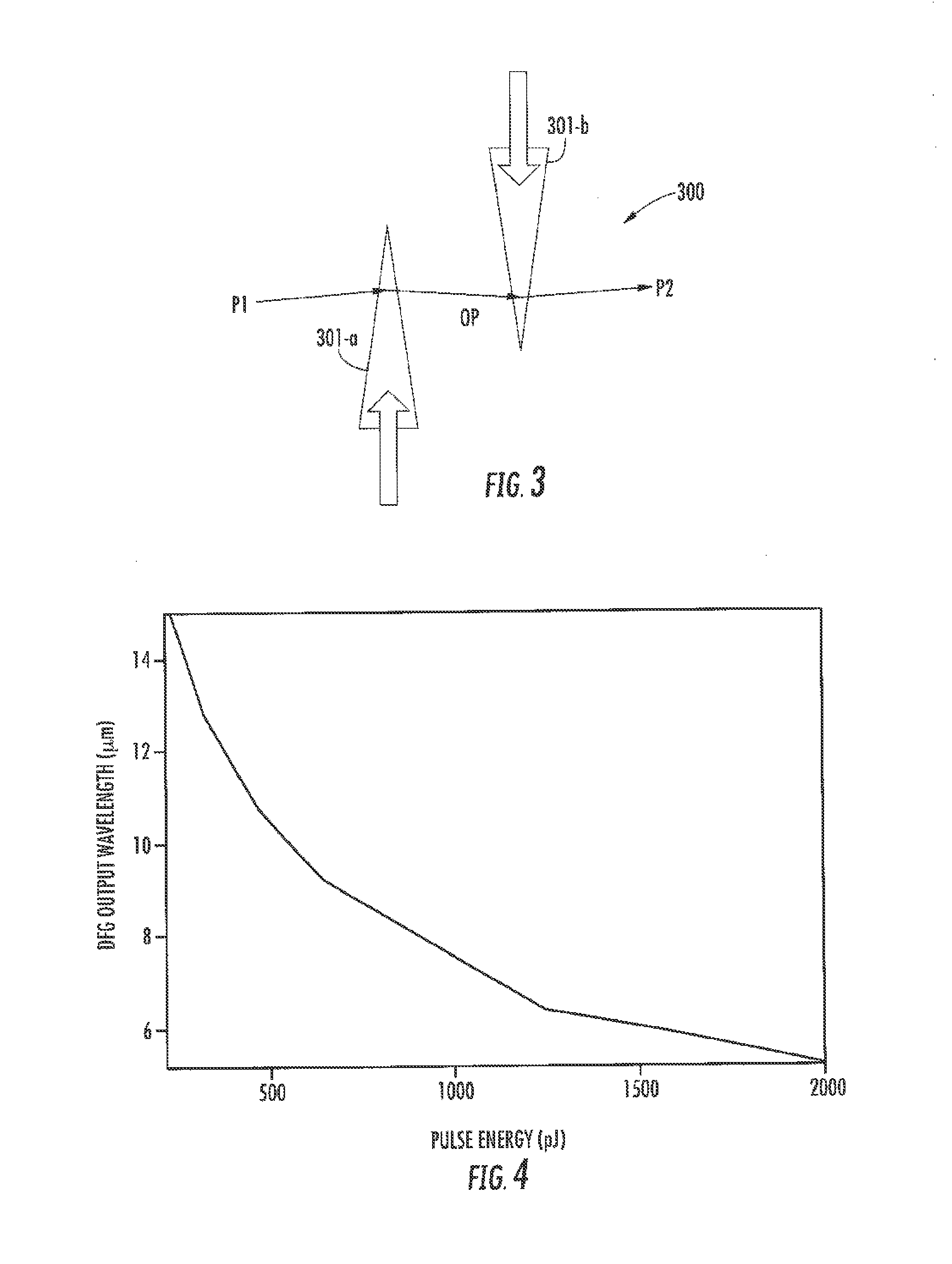Compact coherent high brightness light source for the mid-IR and far IR
a high-brightness, coherent technology, applied in the direction of instruments, cladded optical fibres, optical elements, etc., can solve the problems of limited optical conversion efficiency, performance constraints, limited output power of mid-ir to far-ir light sources, etc., to maximize the temporal overlap between the low frequency and high frequency spectral components inside the dfg crystal, optimize the temporal overlap, and increase the output power
- Summary
- Abstract
- Description
- Claims
- Application Information
AI Technical Summary
Benefits of technology
Problems solved by technology
Method used
Image
Examples
Embodiment Construction
[0029]Mid-IR frequency generation has been discussed in U.S. Pat. No. 8,040,929 ('929) to Imeshev et al. entitled “Optical parametric amplification, optical parametric generation, and optical pumping in optical fiber systems”, filed Mar. 25, 2005, in U.S. patent application Ser. No. 12 / 399,435 ('435) to Fermann et al., entitled “Optical scanning and imaging systems based on dual pulsed laser systems”, filed Mar. 6, 2009, and U.S. patent application Ser. No. 11 / 546,998 ('998) to Hartl et al. entitled “Laser based frequency standards and their applications”, filed Oct. 13, 2006. Coherent ultra broadband light sources have further been discussed in ‘Broadband Generation of Coherent Continua with Optical Fibers’, U.S. Patent Application No. 61 / 483,472, ('472), filed May 6, 2011, to Fermann et al. A review of compact broadband mid-IR sources can further be found in U.S. Pat. No. 7,519,253 to Islam et al.
[0030]Conveniently, such sources can be constructed using frequency down-conversion o...
PUM
 Login to View More
Login to View More Abstract
Description
Claims
Application Information
 Login to View More
Login to View More - R&D
- Intellectual Property
- Life Sciences
- Materials
- Tech Scout
- Unparalleled Data Quality
- Higher Quality Content
- 60% Fewer Hallucinations
Browse by: Latest US Patents, China's latest patents, Technical Efficacy Thesaurus, Application Domain, Technology Topic, Popular Technical Reports.
© 2025 PatSnap. All rights reserved.Legal|Privacy policy|Modern Slavery Act Transparency Statement|Sitemap|About US| Contact US: help@patsnap.com



